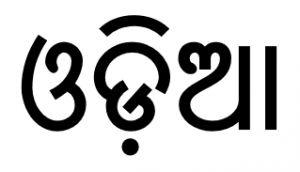Difference between revisions of "Language/Odia/Grammar/Negation"
m (Quick edit) |
m (Quick edit) |
||
| Line 9: | Line 9: | ||
<span link>Take a moment to explore these relevant pages as you conclude this lesson: [[Language/Odia/Grammar/Pronouns|Pronouns]], [[Language/Odia/Grammar/How-to-Use-Have|How to Use Have]] & [[Language/Odia/Grammar/Plurals|Plurals]].</span> | |||
== Negation Particle == | == Negation Particle == | ||
| Line 95: | Line 96: | ||
You can also visit the Odia section of the [https://polyglotclub.com/language/odia Odia] page on the [https://polyglotclub.com Polyglot Club] website to find more resources for learning Odia. In addition, the [http://www.glossika.com/en/dict/odia Glossika Odia Dictionary] and the [https://www.transparent.com/learn-odia/ Transparent Language Odia Course] can be helpful resources for expanding your Odia vocabulary and grammar knowledge. | You can also visit the Odia section of the [https://polyglotclub.com/language/odia Odia] page on the [https://polyglotclub.com Polyglot Club] website to find more resources for learning Odia. In addition, the [http://www.glossika.com/en/dict/odia Glossika Odia Dictionary] and the [https://www.transparent.com/learn-odia/ Transparent Language Odia Course] can be helpful resources for expanding your Odia vocabulary and grammar knowledge. | ||
<span class='maj'></span> | <span class='maj'></span> | ||
| Line 106: | Line 106: | ||
|description=In this lesson, we will focus on the negation in Odia language. Learn about negation particles and how to negate verbs, nouns, and adjectives in Odia. | |description=In this lesson, we will focus on the negation in Odia language. Learn about negation particles and how to negate verbs, nouns, and adjectives in Odia. | ||
}} | }} | ||
==Videos== | ==Videos== | ||
| Line 114: | Line 112: | ||
<youtube>https://www.youtube.com/watch?v=KIEumDb7SOQ</youtube> | <youtube>https://www.youtube.com/watch?v=KIEumDb7SOQ</youtube> | ||
==Other Lessons== | |||
== | |||
* [[Language/Odia/Grammar/Give-your-Opinion|Give your Opinion]] | * [[Language/Odia/Grammar/Give-your-Opinion|Give your Opinion]] | ||
* [[Language/Odia/Grammar/How-to-Use-Be|How to Use Be]] | * [[Language/Odia/Grammar/How-to-Use-Be|How to Use Be]] | ||
| Line 126: | Line 123: | ||
{{Odia-Page-Bottom}} | {{Odia-Page-Bottom}} | ||
<span links></span> | |||
Revision as of 21:27, 27 March 2023
Hi Odia learners! 😊
In this lesson, we will focus on the negation in Odia language. Negation is an important part of speech used in every language. It helps in expressing negative sentences and giving opposite meaning to a sentence.
Take a moment to explore these relevant pages as you conclude this lesson: Pronouns, How to Use Have & Plurals.
Negation Particle
In Odia language, negation particles are used to form negative sentences. The most common negation particle is aଉଁ (auṇị̄). It is used to show negation in present tense sentences. For example:
| Odia | English |
|---|---|
| ମୁ ଖାଇଛି। | I have eaten. |
| ମୁ ଖାଇନି। | I have not eaten. |
Here, the negation particle ନ (na) has been added to the verb to show that the action has not happened. Another example:
| Odia | English |
|---|---|
| ସେ ଭାଲ ଅଛନ୍ତି। | He is good. |
| ସେ ଭାଲ ନାହିଁ। | He is not good. |
In this example, the negation particle ନାହିଁ (nahị̄) has been added to the adjective.
Negation with Verbs
When negating verbs in the past tense, ନ (na) or ନାଁ (nāị̄) is used before the verb. For example:
| Odia | English |
|---|---|
| ସେ ଖେଳିନ୍ତି। | He played. |
| ସେ ନ ଖେଳିନି। | He did not play. |
Another example:
| Odia | English |
|---|---|
| ଆଉଁ କେତେ ଦିନ ହୁଏଛନ୍ତି? | How many days have passed? |
| ଆଉଁ କେତେ ଦିନ ନହୁଁ। | Not even a single day has passed. |
In this example, ନହୁଁ (nahuị̄) has been added to the entire sentence to show negation.
Negation with Nouns and Adjectives
Nouns and adjectives are negated using the negation particle ନାହିଁ (nahị̄). For example:
| Odia | English |
|---|---|
| ସେ ଖୁଶି ନାହିଁ। | She is not happy. |
| ଆମ ଘର ଛାଡିନାହିଁ। | We did not leave the house. |
Negative Question
Negative questions are formed by adding the negation particle to the beginning of the sentence. For example:
| Odia | English |
|---|---|
| ତୁମେ ହିଁ ଯାଇବେ ନା ? | Will you not go? |
| ତୁ ଇଂରାଜୀ ଜାଣିବି ନା ? | Do you not know English? |
Dialogue
- Person 1: ଆମର ପେଟ ଭରିନାହିଁ। (I am not full.)
- Person 2: ତୁ ଖାଇନି କି ? (Did you not eat?)
Cultural Information
Odia is spoken in the state of Odisha in India. It is the official language of the state and is also recognized as a classical language by the Government of India. The Odia script is derived from the Brahmi script and has similarities to other scripts like Bengali and Assamese. Odia literature has a rich history and includes works dating back to the 9th century. The Jagannath Temple in Puri is an important cultural landmark in Odisha and attracts pilgrims from all over India.
Practice
To practice your Odia language skills further, you can use Polyglot Club website. Find native speakers and ask them any questions!
You can also visit the Odia section of the Odia page on the Polyglot Club website to find more resources for learning Odia. In addition, the Glossika Odia Dictionary and the Transparent Language Odia Course can be helpful resources for expanding your Odia vocabulary and grammar knowledge.
Sources
Videos
Present Perfect Tense in Odia-2 || Negative, Interrogative || Uses of ...
Other Lessons
- Give your Opinion
- How to Use Be
- How to Use Have
- Pronouns
- Plurals
- Questions
- Conditional Mood
- Adjectives
